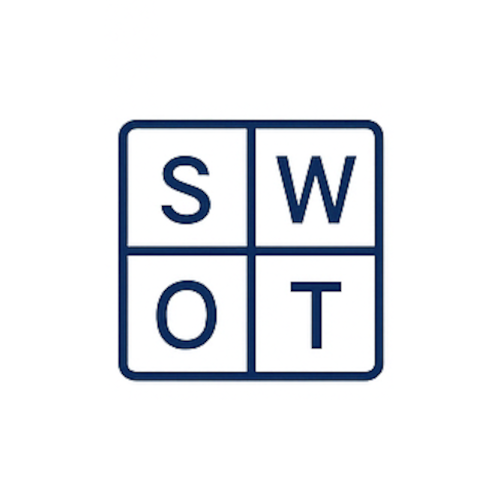I. Mission vs Vision
Mission – also known as mission statement – describes the purpose of the organization in terms of the key activities it performs and the benefits it aims to provide for its customers. The mission can change over time but that frequently implies a significant change in what an organization does and for whom it does it, so it involves a significant pivot and transformation.
Examples:
1. Improve tech teams’ effectiveness through high-quality online training.
2. Deliver high-quality organic food to customers’ doorsteps.
Vision – also known as a vision statement or destination statement – describes the end goal of the organization. The vision should describe the desired end state of the organization and the environment in which it operates. In other words, the vision statement represents the organization’s definition of success. The vision can evolve over time, usually by becoming more ambitious, but at any point in time the organization should have a clear vision that it aspires towards.
Examples:
1. Become the biggest player in the online software training space in Europe.
2. Become the go-to food ordering service in London.
II. Goals vs Objectives
Goals represent high-level directions for an organization. They are aspirational and stable. Goals are expressed qualitatively, not quantitatively.
For instance, “Increase profit” is a good example of an organizational goal. The organization can always strive to increase its profit, but it will likely never reach a point where it has increased it to the extent that it would no longer wish to go further. However, it is possible for the organization to increase profits sufficiently such that a further increase, though desirable, is no longer a priority. In other words, since goals are aspirational, they are mostly used to set focus and direction and cannot truly be said to be accomplished. Goals are typically broader, more long-term and less specific. They are important because they provide a sense of direction and purpose, helping to align the efforts of employees and organizations towards a common vision.
Examples:
1. Reduce operational costs.
2. Increase market share in the USA.
3. Increase profits.
4. Establish a foothold in the UK market.
Objectives are specific, quantifiable and time-bound targets towards a particular goal that must be accomplished. For example, an objective to achieve the goal of “financial security” might be to “save $10,000 in the next 12 months.” Objectives help break down a goal into smaller, more manageable steps and provide a clear basis for measuring progress towards the goal. Good objectives follow the SMART criteria:
a. Specific → The objective is specific enough and expressed quantitatively so that its completion can easily be judged.
b. Measurable → The completion and progress of the objective can be numerically measured.
c. Achievable → The objective can be executed by the organization given the organizational resources, budget, and overall current context.
d. Relevant → The objective is relevant to the organization’s strategy by supporting one of its strategic goals.
e. Time–bound → The objective has an explicit due date.
Examples:
1. Hire 10 new customer support representatives in the UK.
2. Reduce operational costs by 2 FTEs.
In summary, goals are general statements of aspirations, while objectives are specific, measurable and time-bound targets towards those aspirations.
III. Stakeholders vs Shareholders
Stakeholders represent a category that covers a broader range of individuals or groups who have an interest in the company and can be affected by its actions and decisions. This may include employees, customers, suppliers, the local community, government entities, and more. Their interests can extend beyond financial concerns and may involve aspects such as environmental impact, social responsibility, and the overall reputation of the company. Stakeholders can influence and be influenced by the company, even if they don’t necessarily own shares in it.
Shareholders represent a category that covers a specific type of stakeholders who have a financial interest in the company. They own shares of the company’s stock, which represents ownership in the business. Shareholders are primarily concerned with the company’s financial performance and the return on their investment. Their relationship with the company is often defined by their financial stake and voting rights in certain matters.
In summary, while all shareholders are stakeholders, not all stakeholders are shareholders. Shareholders specifically hold a financial interest in the company, whereas stakeholders encompass a wider array of parties with various interests in the company’s activities and outcomes.
IV. Strategy vs Tactics
Strategy represents the overarching plan devised to achieve specific objectives and fulfill the organization’s mission. It is the high-level approach that guides decision-making, resource allocation and actions, over an extended period.
Examples:
1. To gain a competitive edge through product differentiation and market expansion.
Tactics on the other hand, are the specific actions and maneuvers executed to implement the broader strategy. These are the detailed steps taken to achieve short-term goals and contribute to the overall strategic plan.
Examples:
1. Launch a new marketing campaign, enhance product features, and enter new geographical markets.
In conclusion, strategy provides the overall direction, and tactics are the detailed steps taken to implement that strategy effectively.
V. KPIs vs. Metrics
Key Performance Indicators (KPIs) are specific and measurable values used to evaluate the success of an organization in reaching its objectives. KPIs represent the critical measures that directly influence the accomplishment of specific goals and align with the organization’s mission.
Examples:
1. Number of answered support tickets in a customer support department. This KPI is esential for the good functioning of this department. The KPI can be at a sufficient level, so it should be monitored to remain constant; or the KPI should have to be improved, from let’s say 200 tickets/day to 250 tickets/day, by means of automation.
Metrics represent any type of measurements used to quantify performance, which may or may not be a key performance indicator. They are the detailed observations and quantifiable elements that aid in measuring and assessing various aspects of performance.
Examples:
1. Taking the same customer support department example from above, a metric would be the average duration of a customer phone call, as this would impact the performance of the department. When the average duration of a phone call increases, it may affect other metrics and KPIs, like for example the number of answered tickets, since more time will have to be spend on average on a ticket.












